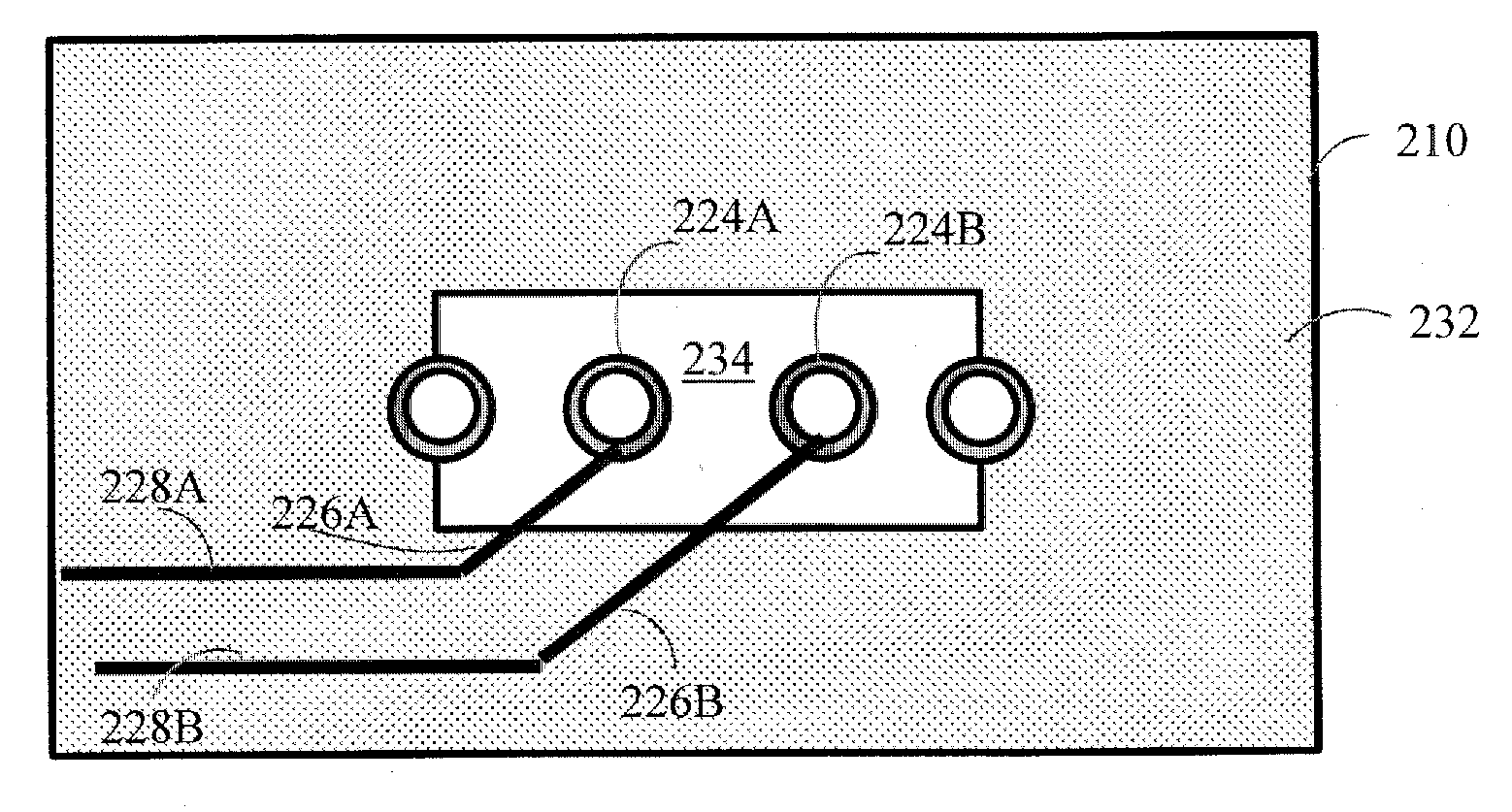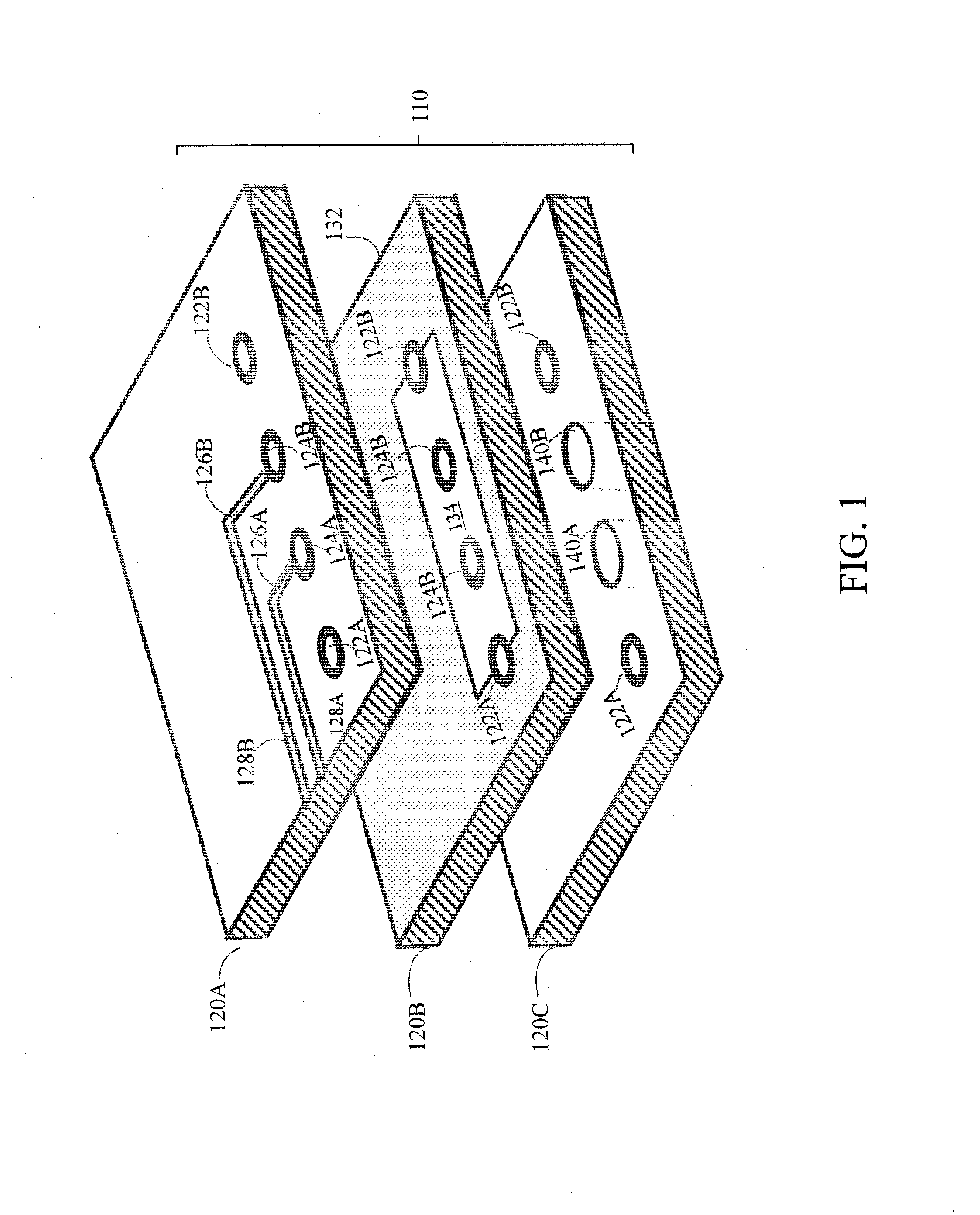High performance printed circuit board
high-performance technology, applied in the direction of printed element electric connection formation, high-frequency circuit adaptation, instruments, etc., can solve the problems of limiting the area in which traces can be run, remaining plating can interfere with high-frequency operation, and can be particularly difficult to design a printed circuit board for the attachment of an electrical connector
- Summary
- Abstract
- Description
- Claims
- Application Information
AI Technical Summary
Benefits of technology
Problems solved by technology
Method used
Image
Examples
Embodiment Construction
[0039]The inventor has recognized and appreciated that improved high frequency performance of a printed circuit board may be achieved by controlling the impedance of breakout regions within a footprint for a connector or other component to be mounted to a printed circuit board. The impedance may be controlled to reduce the number of impedance transitions in the signal paths that carry high speed signals through the printed circuit board. The inventor has recognized and appreciated that, though the breakout region may be a relatively small portion of the overall signal path through a via and along traces of the printed circuit board, impedance characteristics in the breakout region can have a significant impact on the integrity of signals propagating along that path.
[0040]Further, the inventor has recognized and appreciated that, at high frequencies, such as those associated with signals with data rates above 3 Gigabits per second (Gbps), patterns of changes in impedance can be signi...
PUM
| Property | Measurement | Unit |
|---|---|---|
| Length | aaaaa | aaaaa |
| Thickness | aaaaa | aaaaa |
| Angle | aaaaa | aaaaa |
Abstract
Description
Claims
Application Information
 Login to View More
Login to View More - R&D
- Intellectual Property
- Life Sciences
- Materials
- Tech Scout
- Unparalleled Data Quality
- Higher Quality Content
- 60% Fewer Hallucinations
Browse by: Latest US Patents, China's latest patents, Technical Efficacy Thesaurus, Application Domain, Technology Topic, Popular Technical Reports.
© 2025 PatSnap. All rights reserved.Legal|Privacy policy|Modern Slavery Act Transparency Statement|Sitemap|About US| Contact US: help@patsnap.com



